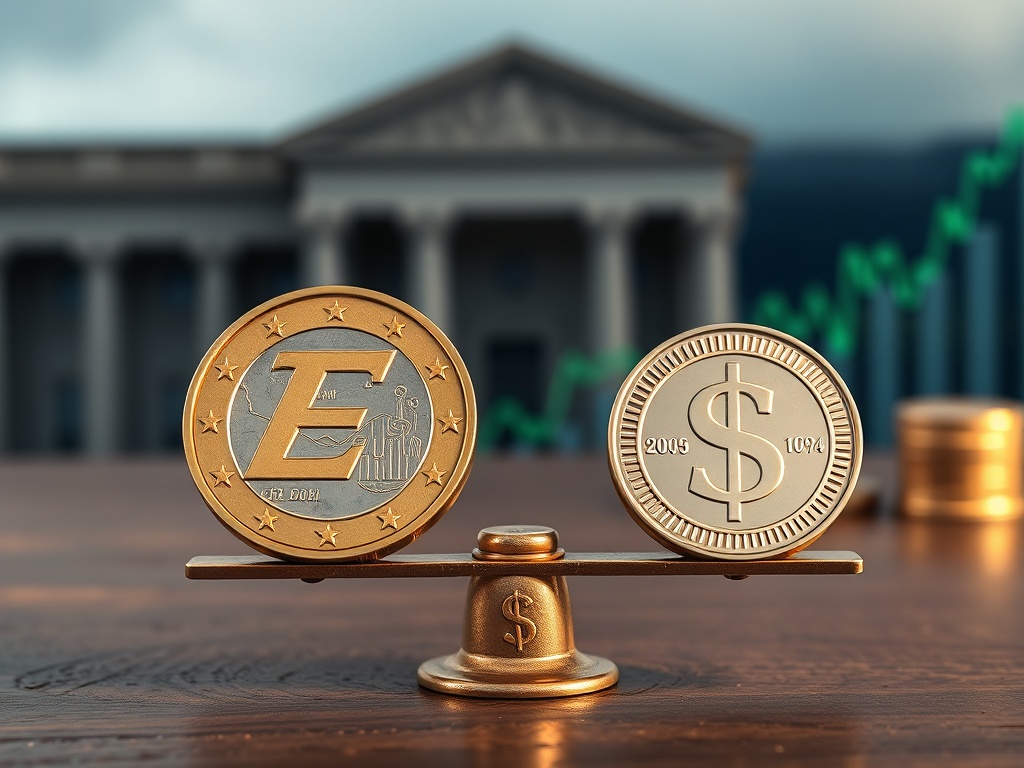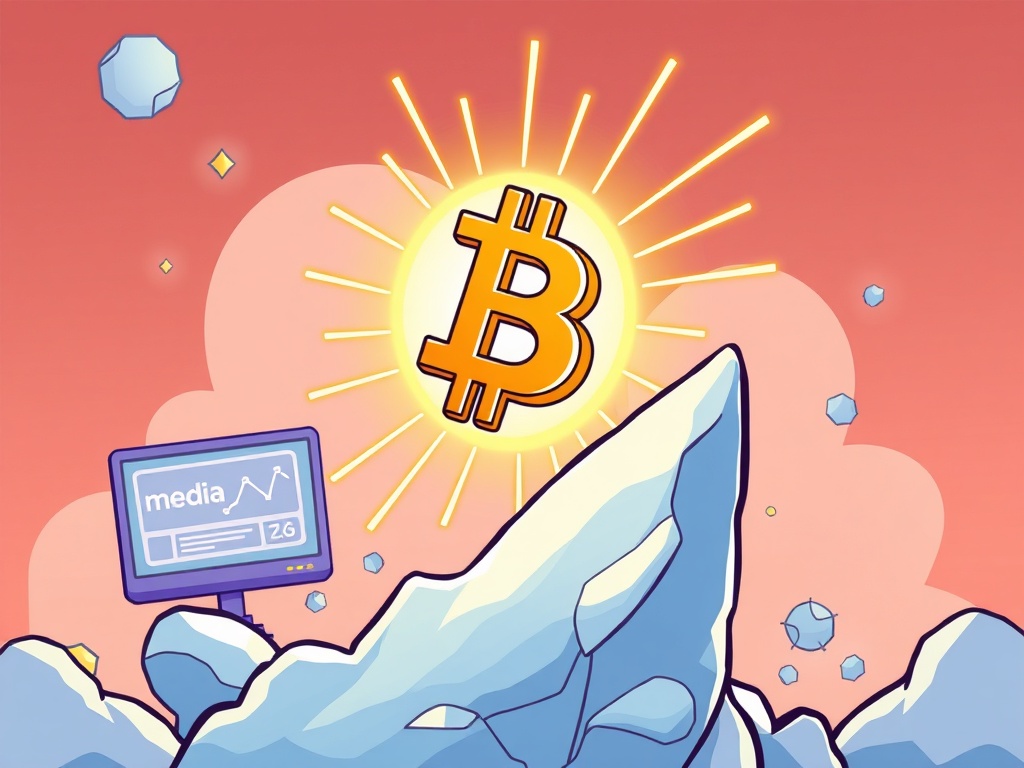BitcoinWorld

Crucial Fed Pivot: BofA’s Bold EUR/USD Move Signals Dollar Weakness Ahead
In the dynamic world of global finance, where every major institutional move can send ripples across markets, Bank of America (BofA) has made a significant call: going long on the EUR/USD currency pair. This bold strategic decision, predicated on the anticipation of a Fed pivot, holds profound implications not just for traditional currency traders but also for cryptocurrency investors who closely monitor macro-economic shifts. Understanding this stance is crucial for anyone looking to navigate the evolving financial landscape.
Unpacking BofA’s Bold Move: Why Go Long EUR/USD Forecast?
When a major financial institution like Bank of America announces it’s ‘going long’ on a currency pair like EUR/USD, it means they are betting on the Euro strengthening against the US Dollar. Essentially, they are buying Euros and selling Dollars, expecting the exchange rate to rise. This isn’t just a casual trade; it’s a strategic position based on extensive analysis of economic indicators, central bank intentions, and global liquidity flows.
BofA’s conviction stems from a belief that the underlying economic conditions and monetary policy trajectories of the Eurozone and the United States are set to diverge in a way that favors the Euro. This outlook is deeply intertwined with their view on the Federal Reserve’s future actions.
The Anticipated Fed Pivot: A Game-Changer for the Dollar?
The term ‘Fed pivot’ refers to a significant shift in the Federal Reserve’s monetary policy stance, typically from a hawkish (tightening) to a dovish (easing) approach. For years, the Fed has been on an aggressive rate-hiking cycle to combat inflation. However, as inflation shows signs of cooling and economic growth concerns emerge, market participants, including BofA, are increasingly expecting the Fed to pause or even begin cutting interest rates in the near future. This is the anticipated pivot.
Why is this considered a game-changer? A pivot towards lower interest rates or a less restrictive monetary policy directly impacts the attractiveness of the US Dollar. Here’s why:
- Reduced Yield Advantage: Higher interest rates make a currency more appealing to investors seeking better returns on their fixed-income investments. If the Fed cuts rates while other central banks maintain or even hike theirs, the dollar’s yield advantage diminishes.
- Increased Liquidity: A dovish Fed might also signal an increase in the money supply, which can dilute the dollar’s value.
- Risk-On Sentiment: Lower interest rates generally encourage investors to seek higher-yielding, riskier assets, potentially diverting capital away from safe-haven currencies like the dollar.
This expected shift creates a significant ‘headwind’ for the dollar, meaning factors are aligning to push its value lower against other major currencies.
Understanding Dollar Weakness: What Drives It?
The concept of dollar weakness is not merely about a single event like a Fed pivot, but rather a confluence of factors that erode the dollar’s purchasing power and international appeal. While a Fed pivot is a primary catalyst, other elements contribute to this potential decline:
- Interest Rate Differentials: As mentioned, if the European Central Bank (ECB) maintains higher rates or is perceived to be more hawkish than the Fed, the Euro becomes more attractive for carry trades.
- Economic Outlook: A strengthening Eurozone economy relative to the US could also bolster the Euro. If European growth prospects improve, foreign investment may flow into the region, increasing demand for the Euro.
- Global Risk Appetite: During periods of high global risk appetite, investors tend to move away from safe-haven assets like the dollar and into growth-oriented currencies or commodities.
- Fiscal Health: Concerns over US national debt or fiscal policy could also contribute to long-term dollar depreciation, though this is usually a slower-moving factor.
BofA’s long EUR/USD position suggests they believe these factors are aligning to create a sustained period of dollar depreciation, making the Euro a preferred currency for investment.
Crafting Your Forex Trading Strategy Amidst Macro Shifts
For forex traders, BofA’s call serves as a powerful signal, but it’s crucial to develop an independent and robust forex trading strategy. While institutional insights are valuable, market timing and risk management remain paramount. Here are some actionable insights:
- Monitor Central Bank Communication: Pay close attention to speeches, meeting minutes, and economic projections from both the Fed and the ECB. Any deviation from expected dovishness or hawkishness can quickly reverse market sentiment.
- Analyze Economic Data: Key economic indicators like inflation rates, GDP growth, employment figures, and retail sales for both the US and Eurozone provide insights into the health of their respective economies and influence central bank decisions.
- Understand Correlation: Recognize how dollar movements impact other asset classes. A weaker dollar often correlates with stronger commodity prices (as commodities are dollar-denominated) and can also provide a tailwind for cryptocurrencies.
- Risk Management: Utilize stop-loss orders, manage position sizes, and avoid over-leveraging. Even strong forecasts can be undone by unexpected market events.
- Diversification: Consider diversifying your portfolio beyond just forex, exploring how a weaker dollar might benefit other investments you hold or are considering.
Navigating these macro shifts requires a blend of fundamental analysis and disciplined execution.
Central Bank Policy Divergence: The Heart of Currency Volatility
The core of the EUR/USD dynamic often lies in the divergent paths of central bank policy. While the Fed is expected to pivot towards easing, the ECB’s stance might be different. The Eurozone has faced its own set of inflationary pressures and economic challenges, and the ECB’s response could vary.
Consider this simplified comparison of potential policy trajectories:
| Central Bank | Current Stance (General) | Anticipated Near-Term Path (BofA’s View) | Potential Impact on Currency |
|---|---|---|---|
| Federal Reserve (Fed) | Restrictive (High rates) | Pivot to easing (Rate cuts/pause) | Dollar Weakness |
| European Central Bank (ECB) | Restrictive (High rates) | Maintain or slower easing | Euro Strength |
This divergence in policy expectations is what fuels the conviction behind going long EUR/USD. If the Fed becomes more dovish while the ECB remains relatively hawkish, the interest rate differential would narrow or even reverse in favor of the Euro, making it more attractive to hold.
Beyond Forex: Ripple Effects on Crypto and Other Assets
The implications of a weaker dollar extend far beyond the traditional forex market. For the crypto community, this is particularly relevant. Cryptocurrencies, especially Bitcoin, are often seen as alternative stores of value or ‘digital gold’ and can exhibit an inverse correlation with the US Dollar.
- Crypto as a Dollar Hedge: When the dollar weakens, investors may seek alternative assets to preserve wealth, potentially driving demand for Bitcoin and other cryptocurrencies.
- Increased Liquidity: A more dovish Fed policy often leads to increased global liquidity, which can flow into riskier assets, including crypto.
- Commodity Boost: Dollar weakness typically supports commodity prices (like gold and oil), as they become cheaper for holders of other currencies. This can signal broader inflationary pressures or a shift in global capital flows.
- Equity Markets: While complex, a weaker dollar can sometimes benefit US multinational corporations (making their exports cheaper) and can signal a ‘risk-on’ environment generally supportive of equity markets.
Understanding these interconnected dynamics is vital for making informed investment decisions across different asset classes.
Conclusion: A Compelling Shift on the Horizon
Bank of America’s strategic move to go long EUR/USD, driven by the compelling expectation of a Fed pivot, signals a potentially significant shift in global currency dynamics. This anticipated policy change from the Federal Reserve is seen as a major headwind for the US Dollar, paving the way for potential dollar weakness and Euro strength. For investors, this outlook necessitates a careful review of their portfolios, potentially adjusting their forex trading strategy and considering the broader implications for assets ranging from commodities to cryptocurrencies. The divergence in central bank policy remains a key driver of market volatility, offering both challenges and opportunities for those who are prepared.
To learn more about the latest Forex market trends, explore our article on key developments shaping the Euro and US Dollar in the context of global liquidity and institutional adoption.
This post Crucial Fed Pivot: BofA’s Bold EUR/USD Move Signals Dollar Weakness Ahead first appeared on BitcoinWorld and is written by Editorial Team





